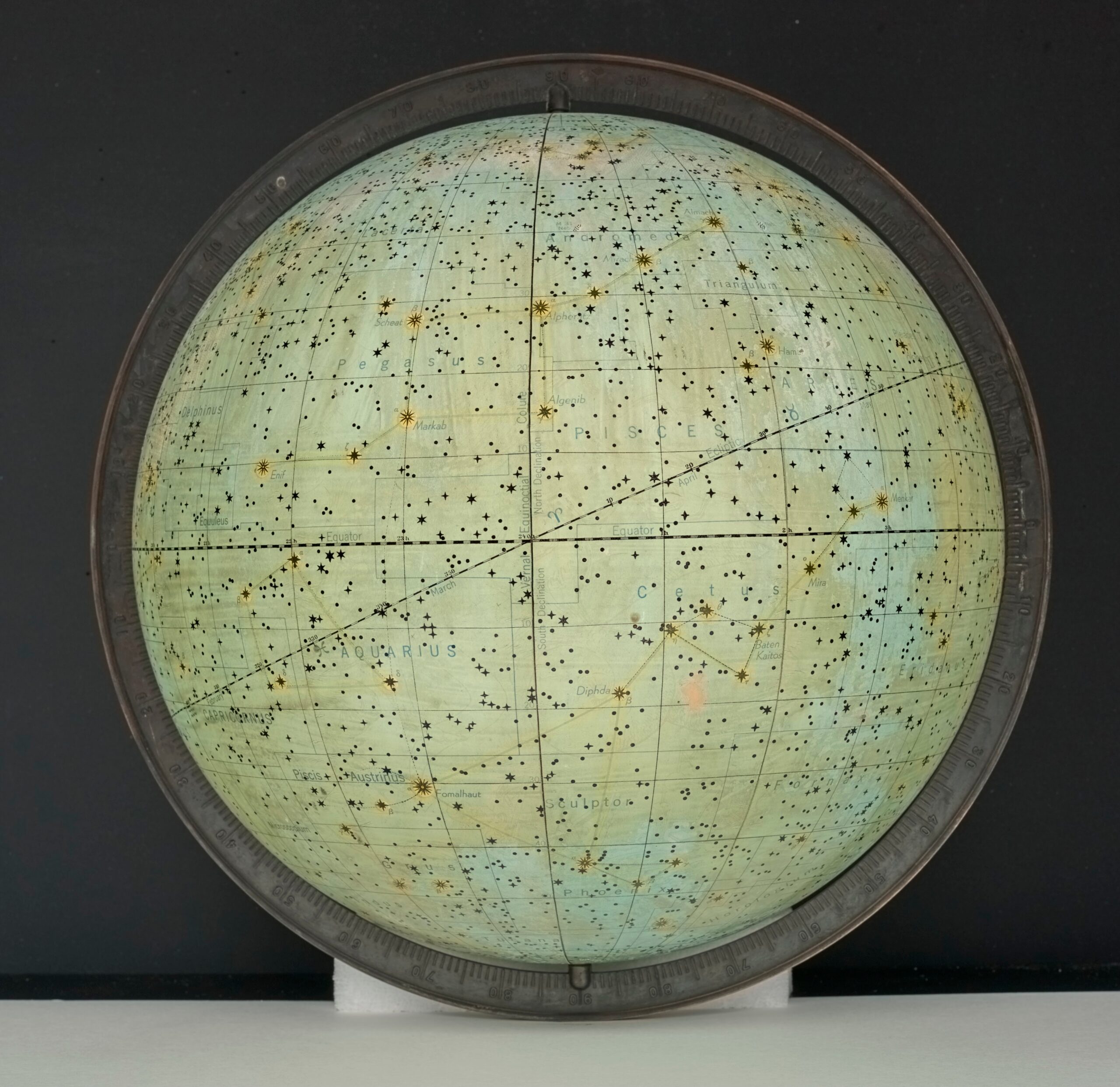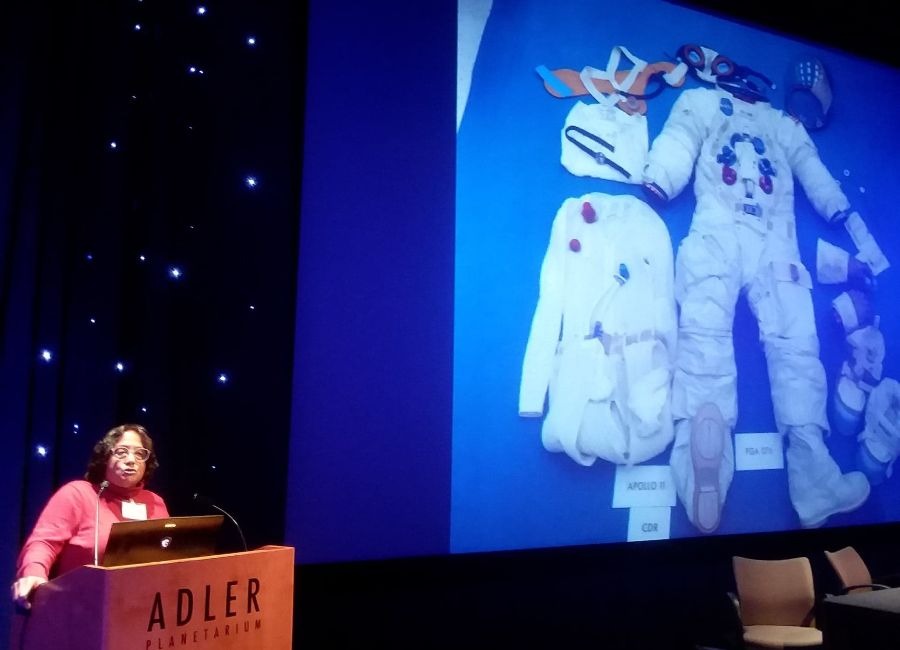Pictures In The Sky

Header Image: This celestial globe from the Adler Planetarium’s collection shows the 88 constellations and their corresponding boundaries—which are the light blue lines on the surface of this globe—defined by the International Astronomical Union (IAU).
On January 10, 2016, I was among the millions of music fans who staggered at the news that David Bowie had passed away. David Robert Jones was as human as anyone else, but somehow we, the legions of admirers of his multifarious artistic persona, were convinced that David Bowie, a.k.a. the Starman, would live forever and keep on surprising us mere mortals with ever renewed looks and artistic directions.
Bowie’s legacy is here to stay for sure, but as if that were not enough, a few days after the news of his demise, bona fide news outlets reported that astronomers had created a new constellation celebrating the Starman, thus giving him a permanent place among the stars. The story soon went viral, and as it often happens with such stories, the facts were less enthusing than what the initial reports suggested, but interesting nonetheless.
A group of Belgian astronomers from the MIRA Public Observatory had formed an asterism (a pattern of stars suggesting some shape or figure) in homage to Bowie. It was just a symbolic gesture to celebrate the artist and his work, with no pretense of having the asterism recognized by the International Astronomical Union (IAU) as a new constellation.
The Standard List Of Constellations
In the 1920s, the IAU established a standard list of 88 constellations corresponding to well-defined areas of the sky. These are but conventions, of course, but not made up out of the blue. In fact, they stem from a long and evolving tradition of astronomical knowledge and celestial cartography that has its roots in Mesopotamia and Ancient Greece, was preserved and expanded by Islamic astronomers during the Middle Ages, and developed further in the Western world during the late Middle Ages and the modern period. These 88 constellations include many that you will be well familiar with, such as Orion, The Great Bear and the Little Bear, and the twelve constellations of the zodiac, all of which have had a longstanding presence in Western celestial globes and star maps. The IAU’s list is meant to provide a common ground for astronomers and stargazers; but of course it cannot account for the varied traditions of sky knowledge that developed independently all over the world.
Be it to follow the celestial motions and keep track of time, for divination purposes, to tell stories about the origins of the cosmos, to share spiritual beliefs and convey moral messages, or to celebrate certain events and personalities, the night sky has long been used as a picture book across different cultures. The episode of Bowie’s asterism reminds us that even in our modern, light-polluted urban environments, whatever stars we might be able to see remain open to our imagination.
Music To Our Ears—With A Little Celestial Twist
How have star patterns influenced aspects of popular culture…like record album covers?! Explore the evolution of constellations through album artwork from three different records.
Look Up At Constellations Digitally
There are endless possibilities to connect the dots—a message central to our newest exhibition Chicago’s Night Sky and our online exhibit, Pictures in the Sky. Our Collections and Citizen Science teams have also been collaborating in a Zooniverse project titled Mapping Historic Skies, which invites everyone to help us identify and tag thousands of different historical representations of constellations in our collections.







